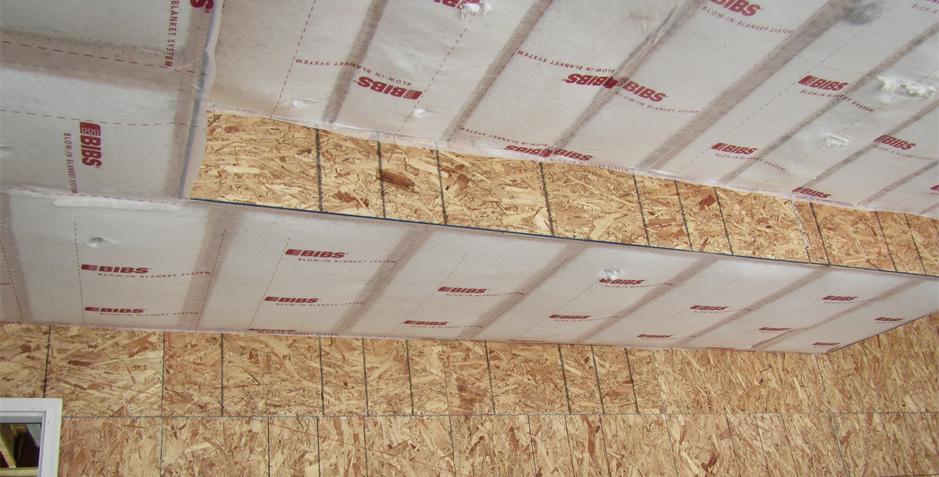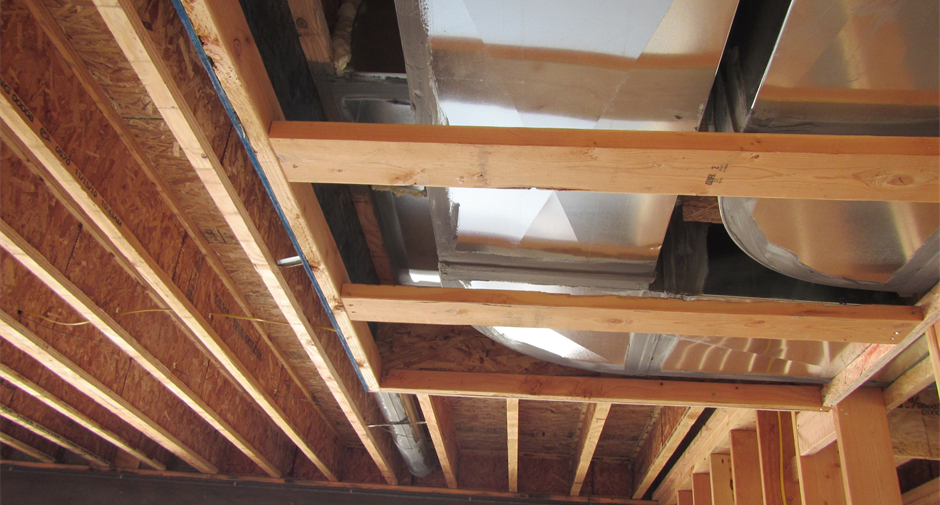The question: is it acceptable to simply insulate under and around the ducts with the building insulation?
Referring to the IECC:
R403.3.1 Insulation (Prescriptive). Supply and return ducts in attics shall be insulated to a minimum of R-8 where 3 inches (76 mm) in diameter and greater and R-6 where less than 3 inches (76 mm) in diameter. Supply and return ducts in other portions of the building shall be insulated to a minimum of R-6 where 3 inches (76 mm) in diameter or greater and R-4.2 where less than 3 inches (76 mm) in diameter.
Exception: Ducts or portions thereof located completely inside the building thermal envelope.
Summarizing:
- Both return and supply ducts in attics must be insulated to a minimum R-8, with an exception for ducts smaller than 3” require a reduced level of R-6, basically for high velocity systems.
- Ducts in other areas require R-6, with an R-4.2 exception for less than 3” ducts.
Considering another important concept when using typical loose fill insulation products, which includes fiberglass insulation. For these types of insulation to be effective, an air barrier is mandatory, just as a thick sweater or down-fill coat is not effective without an air barrier covering. Insulation around ducts must be void of any open airspaces and include an air barrier surrounding the insulation.
Referring back to the first photo, if batt insulation is applied around the underside and sides of the duct, it will not enclose the entire duct, there will be large airspaces allowing convective flows of air around through the insulation, and there will be areas with no insulation, such as the face of the drop ceiling, at framing members and all around the sides of round branch ducts. Batt insulation installed as the building thermal insulation is simply not acceptable.
Let us consider another method, where the floor systems and dropped ceiling areas are blown full of fiberglass insulation.

Please note the blown insulation fills all cavities and smaller spaces, and after drywall is complete, includes an air barrier on all sides of the insulation. (Drywall and OSB are considered an air barrier.) Also note, the duct installation and ceiling furring must provide a minimum 1-1/2 to 2” of space on the bottom and sides of the duct to allow for a minimum R-6. Certainly, a little more space is better.
Please understand the code does not specifically address this application, and that this will not work in climates with extremely high humidity, where a vapor barrier is required. This should not be used in attics, which will be considered in a separate discussion.
Please also note, as with other discussions, this is my interpretation of the code. If you have differing opinions or wish to discuss further, your questions and comments are always welcome. Stay healthy, be safe – Brent

